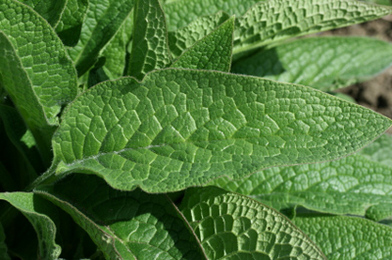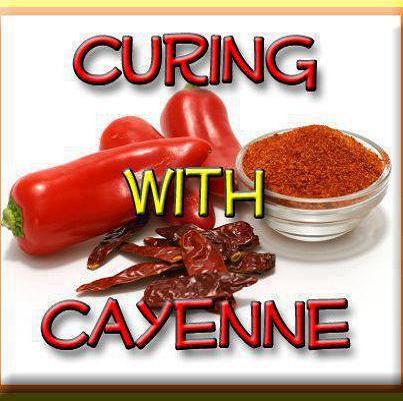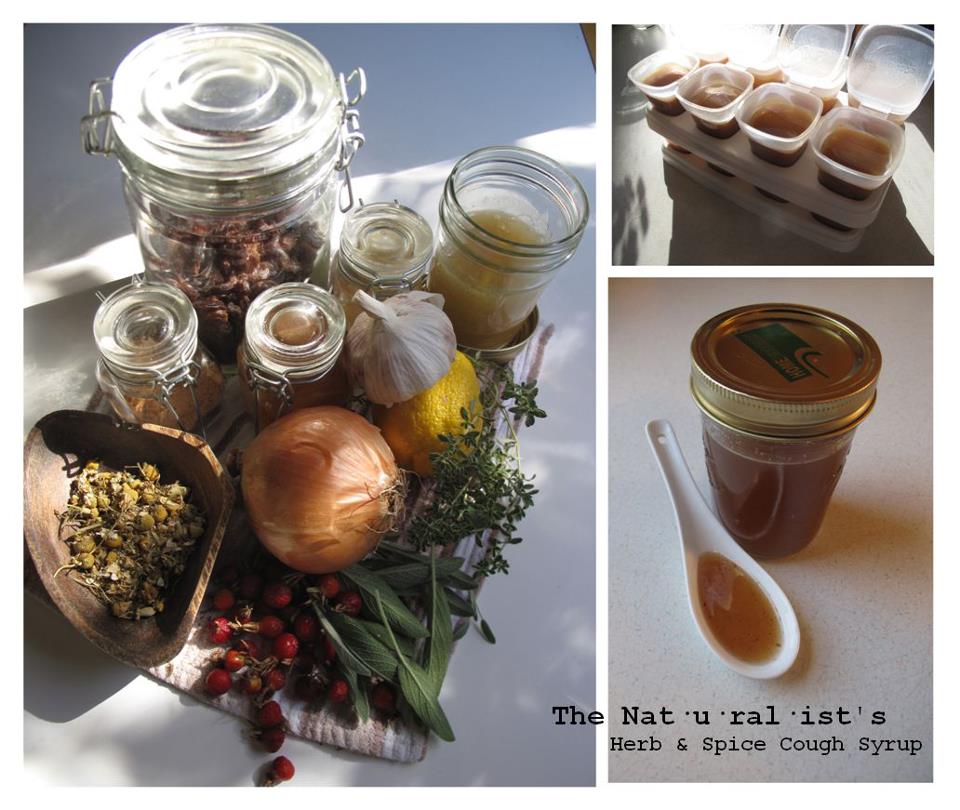 | |
Comfrey: Grow Your Own Fertilizer
|
Comfrey has many
wonderful uses for healing and in the garden. In this post you’ll find five different ways to use comfrey as a fertilizer. I’ve also included some easy growing and harvesting instructions to make sure you don’t end up in a prickly situation.
Comfrey is a hardy herb (or weed, depending on your perspective) and it isn’t easy to get rid of once it’s planted, so knowing where and how to plant and harvest comfrey is important. Once you hear about all its wonderful uses in the garden and its
NPK ratio, though, you’ll probably seek out the perfect spot to forage for it or plant it around your yard.
How to use comfrey in your garden:
Compost activator: Comfrey is an excellent addition to any
compost. It will not only enrich your compost but will also encourage the pile to heat up, speeding up the composting process. This is particularly important if you have lots of carbon-rich material in your compost (dry brown material like twigs, straw, dry grass, etc.) Simply place alternating layers of fresh comfrey leaves and other nitrogen-rich material (fruit and veggie peels, etc.) with carbon-rich material (twigs, dry grass and hay etc.) to make a rocking compost pile. Don’t overdo the comfrey though, or it will break down quickly into a dark gooey liquid and can heat your compost pile too quickly or add too much moisture to the mix.
The Wonders of Comfrey
I am perpetually amazed at the wealth of resources present in our own backyard. It seems that anyone with a proper
compost pile, a source of mulch or
green manure, and common beneficial “
weeds” scattered about has all the resources needed to help their garden thrive.
One of my new favorite herbs for the garden, or “weeds”, depending on your perspective, is comfrey (
Symphytum officinale), which has a wealth of uses for both our own health and the health of the garden.
Comfrey’s deep roots work to bring nutrients up from the subsoil. These nutrients are then made available in the abundant number of leaves it produces every year (4-5 lbs of leaves per established plant per year). The leaves are rich in nitrogen and potassium with a decent amount of phosphorus as well, making them a wonderful homegrown fertilizer. Researchers in British Columbia analyzed the NPK (nitrogen-phosphorus-potassium) ratio of comfrey and discovered that the leaves have a remarkable NPK ratio of 1.80-0.50-5.30.
When we compare these nutrient ratios (1.80-0.50-5.30) to that of animal manure, we can see how far superior comfrey* is.
Dairy Cow: .25-.15-.25
Steer: .70-.30-.40
Horse: .70-.30-.60
Sheep: .70-.30-.90
Chicken: 1.1-.80-.50
Rabbit: 2.4-1.4-.60
From:
Rodale’s All-New Encyclopedia of Organic Gardening,
An Illustrated Guide to Organic Gardening, by Sunset Publishing, and the
Rodale Guide to Composting.
Note: Naturally, nutrient values of animal- or plant-based manure can vary greatly from specimen to specimen.
As you can see from this list, the nitrogen content of comfrey is higher than almost all animal manures found on the market today and its potassium concentration is far superior to all, making it an ideal fertilizer for plants that produce flowers, seeds and fruit for which potassium is an essential component. This, along with the more important
ethical and environmental incentives for not using animal inputs in our gardens, makes growing comfrey as a fertilizer a win-win.
If you don’t think the NPK ratio of the dried leaves is impressive enough, you can also make a concentrated liquid fertilizer out of comfrey (see my next post on uses for comfrey in the garden) with an NPK ratio of about 8-2.60-20.50! (You’ll want to dilute this before use.) The leaves are also full of silica, calcium, iron, magnesium and other essential nutrients to help your fruiting plants thrive.
Health Benefits of Comfrey:
Comfrey is also called knitbone, knitback, consound, blackwort, Ass Ear, Slippery Root, boneset, yalluc (Saxon), gum plant, consolida and bruisewort.
From the pattern of these names, you’ve probably guessed that comfrey can do more than benefit your garden. It also has powerful healing properties, supporting the body’s ability to repair damaged tissue and bones.
Comfrey roots and leaves contain a substance called allantoin, which, along with other beneficial compounds in the plant, supports healthy cell growth and reduces inflammation. Comfrey has been used externally as a poultice or ointment to heal bruises, broken bones, closed wounds, pulled muscles and ligaments, fractures, as well as reducing inflammation from sprains and more.
There is some controversy over comfrey though, because it also contains poisonous substances called pyrrolizidine alkaloids that have been shown to be toxic to the liver when ingested. For this reason, oral comfrey products have been banned in many countries, including the U.S. It is reported that some of the pyrrolizidine alkaloids can be absorbed through the skin as well, but there are varying opinions as to the actual risk of poisoning through topical use. It is best to find a knowledgeable herbalist or naturopath who can teach you the correct way to use this wonderful herb. Most recommend using comfrey externally, for no more than 10 days at a time and no more than 4-6 weeks out of the year. While many feel that caution with this herb is important, it is also a powerful healing tool if used correctly.
So now that you know all about this wonderful herb, weed, and garden companion, get out there and get growing!*
*
Make sure you know more about how comfrey grows before planting it: it is a sturdy plant and will thrive in most soil. Because of these factors, it can be difficult to get rid of if you decide to remove the plant. For more information on this, check out my next post.
DIY Cell Renewal Herbal Cream: Ask Annie
Dear Annie,
I spent a lot of time in a sailboat this summer and my skin seems to have aged a lot from both sun and wind exposure. What DIY formula do you suggest that is really natural and pure to help my skin cells? The last thing I want to do is buy a commercial product that includes toxic chemicals!
–Barbara, ME
Dear Barbara,
My mother used to sail a lot in the summer and I worried about her skin in the fall as it would be so leathery. I didn’t worry about the leathery look, but the health of her skin cells. Fortunately, I have just the formula for you from my book
Better Basics for the Home. It includes comfrey, an exceptionally healing herb for injured or aged skin.
Cell Renewal Comfrey Cream
2 ½ ounces oil infused with comfrey leaf and root
4 ounces comfrey water (make a very strong comfrey tea, let cool, strain out the comfrey)
1 ½ ounces coconut oil
2/3 ounce beeswax
Preservative (1/3 teaspoon grapefruit seed extract, found in health food stores)
10 to 25 drops essential oil, if desired.
To make an oil infusion, crumble 2 ounces of dried comfrey leaves and root into the bottom of a crock pot and cover with an oil such as olive. Place over low heat for 6 hours. Let cool. Strain out the plant matter.
Melt the beeswax with the oils in a double boiler over medium heat. Remove from the heat, pour in the comfrey water, and mix with a hand or electric mixer until thick and creamy. Stir in the preservative.
Note: This cream needs to be refrigerated and will last for two to three weeks. Only use comfrey externally.
Source:
http://www.care2.com/greenliving/comfrey-grow-your-own-fertilizer.html



